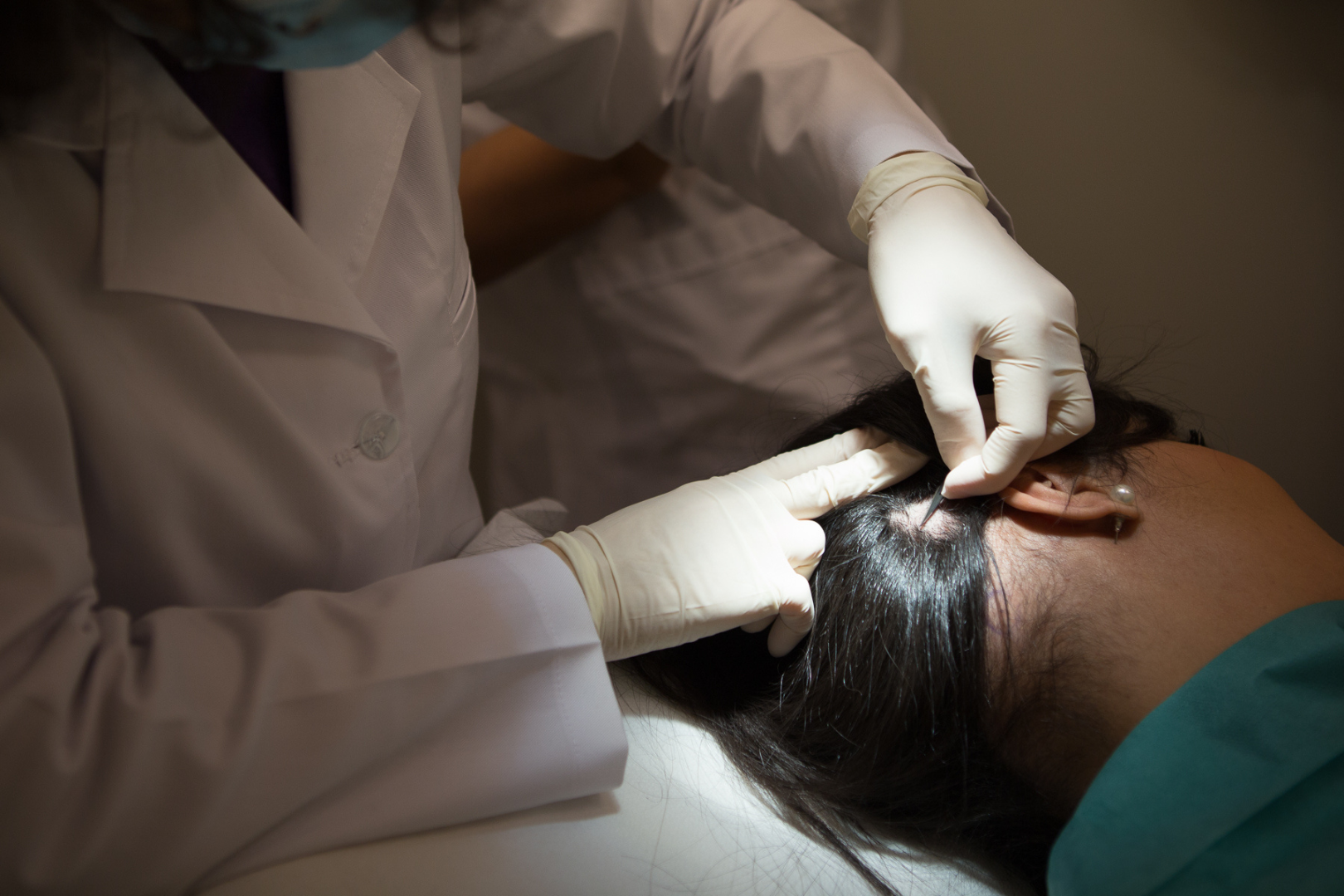Feb 8
/
Skillmed Institute
Trends in the Hair Restoration Industry

The hair restoration industry is undergoing rapid evolution, driven by technological advancements, a growing understanding of hair biology, and an increasing demand for effective solutions.
As hair loss becomes a more prominent concern across diverse demographics, the industry’s innovations are transforming both patient outcomes and clinical practices.
As hair loss becomes a more prominent concern across diverse demographics, the industry’s innovations are transforming both patient outcomes and clinical practices.
Minimally Invasive Techniques
A significant trend in the hair restoration industry is the shift towards minimally invasive techniques. Procedures such as Follicular Unit Extraction (FUE) have become the preferred choice for both practitioners and patients due to their reduced downtime, minimal scarring, and natural-looking results (1).
Modern FUE tools now incorporate precision mechanics, ensuring efficient extraction and implantation of follicles. Robotic systems, like the ARTAS iX, further enhance accuracy, using artificial intelligence to map and select the best donor follicles (2).
Modern FUE tools now incorporate precision mechanics, ensuring efficient extraction and implantation of follicles. Robotic systems, like the ARTAS iX, further enhance accuracy, using artificial intelligence to map and select the best donor follicles (2).
Emergence of Non-Surgical Therapies
Non-surgical options are gaining traction as effective alternatives or complementary treatments to surgical interventions.
Platelet-rich plasma (PRP) therapy has established itself as a cornerstone in regenerative hair treatments. By stimulating follicular activity and prolonging the growth phase, PRP helps address early-stage hair loss (3).
Platelet-rich plasma (PRP) therapy has established itself as a cornerstone in regenerative hair treatments. By stimulating follicular activity and prolonging the growth phase, PRP helps address early-stage hair loss (3).
Low-level laser therapy (LLLT) devices, such as wearable laser caps, have also become popular for their convenience and ability to stimulate cellular activity in hair follicles (4).
Stem cell-based therapies and exosome treatments are on the horizon as revolutionary approaches to hair restoration. These biologically advanced techniques aim to harness the regenerative potential of cells to rejuvenate dormant hair follicles. Although still in experimental stages, they represent a promising future for non-invasive, long-term solutions to hair loss.
Personalized Treatment Plans
Another emerging trend is the emphasis on personalization in hair restoration. Patients increasingly expect tailored solutions that account for their specific hair loss patterns, scalp conditions, and aesthetic goals.
Advanced diagnostic tools use AI and imaging technologies to analyze hair density and scalp health in detail. These insights enable practitioners to design customized treatment plans that optimize outcomes and align with patient expectations.
Advanced diagnostic tools use AI and imaging technologies to analyze hair density and scalp health in detail. These insights enable practitioners to design customized treatment plans that optimize outcomes and align with patient expectations.
Advancements in Hair Cloning and Tissue Engineering
Scientists are exploring techniques to replicate hair follicle cells in laboratory settings to create an unlimited supply of donor follicles. Tissue engineering approaches aim to generate bioengineered follicles capable of producing natural hair (5).
While these innovations are not yet widely available, their potential to transform the industry is immense, offering hope to patients with limited donor hair resources.
Rise of Scalp Micropigmentation (SMP)
Scalp micropigmentation (SMP) involves applying pigment to the scalp to mimic the appearance of hair follicles, effectively camouflaging thinning areas. SMP is particularly appealing for patients who are not candidates for surgical restoration or seek a cost-effective alternative. Advanced pigments and precision tools have enhanced the realism and longevity of SMP results, contributing to its growing popularity.
Focus on Patient Education and Awareness
As the hair restoration industry grows, so does the emphasis on patient education. Practitioners now prioritize transparent communication, helping patients understand the causes of hair loss and the realistic outcomes of various treatments. Online resources, virtual consultations, and interactive tools have made it easier for patients to explore their options and make informed decisions.
Conclusion
The hair restoration industry is at the forefront of medical and technological innovation. Trends such as minimally invasive techniques, non-surgical therapies, personalized treatments, and cloning and tissue engineering advancements are reshaping the field. The future of hair restoration is bright, promising groundbreaking developments in the coming years, benefiting practitioners and patients.
References
- Dua A, Dua K. Follicular Unit Extraction Hair Transplant. J Cutan Aesthet Surg. 2010;3(2):76–81.
- Zhu Y, Yang K, Lin JM, Ni C, Zhang Y, Li Z, et al. A Comparative Study on the Application of Robotic Hair Restoration Technology Versus Traditional Follicular Unit Excision in Male Androgenetic Alopecia. Journal of Cosmetic Dermatology. 2024;23(12):4213–22.
- Paichitrojjana A, Paichitrojjana A. Platelet Rich Plasma and Its Use in Hair Regrowth: A Review. Drug Des Devel Ther. 2022 Mar 10;16:635–45.
- Pillai JK, Mysore V. Role of Low-Level Light Therapy (LLLT) in Androgenetic Alopecia. J Cutan Aesthet Surg. 2021;14(4):385–91.
- Abaci HE, Coffman A, Doucet Y, Chen J, Jacków J, Wang E, et al. Tissue engineering of human hair follicles using a biomimetic developmental approach. Nat Commun. 2018 Dec 13;9(1):5301.

Company
Need Help?
Recruitment
Made in Europe ©2024 Skillmed

